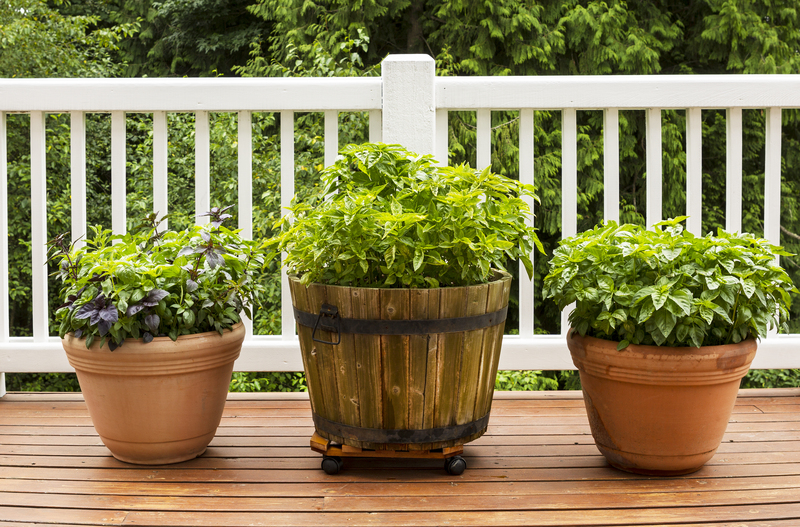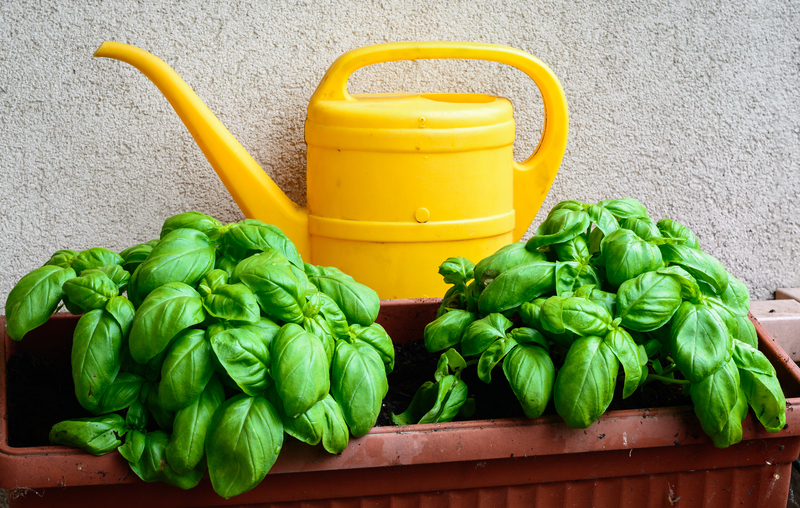Spring Garden Prep Tips
Posted on 21/09/2024
As the days grow longer and the temperatures begin to rise, the anticipation of spring is a gardener's delight. Preparing your garden for spring is a crucial task that determines the health and productivity of your plants for the entire growing season. This comprehensive guide provides essential spring garden prep tips to get you started on the right foot.
Assess Your Garden
Before diving into garden work, it's important to take a step back and assess the current state of your garden. This includes checking both the health of the soil and the leftover debris from the previous season. Walk around your garden, noting any areas that need immediate attention or cleanup.
Check Soil Quality
Soil health is the foundation of a thriving garden. Conduct a soil test to understand its composition, pH, and nutrient levels. You can purchase a soil testing kit from a garden center or send a sample to a local agricultural extension service for analysis. Based on the results, you may need to amend the soil with organic matter, lime, or other soil conditioners.
Remove Debris
Get rid of fallen leaves, dead plants, and other debris that accumulated over winter. This will help reduce pests and diseases as well as improve the soil structure. Use a rake or garden fork to clear the surface and turn over the soil lightly to allow air circulation.

Prune and Trim
Spring is the perfect time to prune and trim your plants for better growth and structure. Different types of plants have specific pruning needs, so it's essential to know what each one requires.
Pruning Shrubs and Trees
For deciduous trees and shrubs, remove any dead or damaged branches to encourage healthy new growth. Prune summer-flowering shrubs before the new growth begins. If you have spring-flowering shrubs, wait until after they bloom to prune them.
Trimming Perennials
Cut back perennials to the ground level if you didn't do so in the fall. This encourages new growth and helps to control diseases. For early blooms, like daffodils and tulips, remove spent flowers but leave the foliage intact until it dies back naturally, as this helps store energy for the next growing season.
Enrich the Soil
Once your garden is clear of debris and you've completed any necessary pruning, focus on enriching the soil. Healthy soil yields healthy plants, so investing time and effort in this step is crucial.
Organic Matter
Add organic matter such as compost, aged manure, or leaf mold to the soil. Spread a layer about two inches thick over your planting areas and work it into the top six to eight inches of soil. This will improve soil structure, moisture retention, and fertility.
Fertilizers and Amendments
Based on your soil test results, apply the necessary fertilizers and soil amendments. Use a balanced fertilizer unless your soil test indicates a deficiency in specific nutrients. Bone meal and blood meal are excellent organic options to improve phosphorus and nitrogen content, respectively.
Plan Your Planting
Planning is a crucial step in creating a productive and aesthetically pleasing garden. Taking the time to plan will save you from making impulsive decisions that may not suit your garden's specific needs.
Choose the Right Plants
Select plants that are well-suited to your climate, soil type, and the amount of sunlight your garden receives. Research the planting and blooming times, as well as the care requirements of each plant. Native plants are often a good choice because they are adapted to local conditions and are more resistant to local pests and diseases.
Companion Planting
Consider companion planting to optimize the health and productivity of your garden. Companion planting involves growing certain plants together to enhance growth, deter pests, and improve flavor. For example, growing tomatoes with basil can improve the flavor of tomatoes and repel certain pests.
Start Seeds Indoors
Starting seeds indoors gives you a head start on the growing season. It allows you to have healthy, established plants ready to go into the ground as soon as the weather is favorable.
Choose the Right Containers
Use seed trays, peat pots, or recycled containers with drainage holes to start your seeds. Fill them with a high-quality, sterile seed-starting mix to provide the best environment for germination.
Provide Adequate Light and Water
Place your seed containers in a bright location, such as a south-facing window or under grow lights. Keep the soil consistently moist but not waterlogged. Once the seedlings have their first true leaves, you can begin fertilizing with a diluted, balanced fertilizer.
Harden Off Seedlings
Before transplanting your seedlings into the garden, harden them off by gradually exposing them to outdoor conditions. Start with a few hours of outdoor time in a sheltered spot, gradually increasing the exposure over a week or two. This helps the plants adjust to the external environment and reduces transplant shock.
Prepare Garden Beds
Preparing your garden beds involves more than just turning over the soil. This step includes creating a hospitable environment for your plants to thrive.
Weed Control
Begin with a thorough weeding to remove any existing weeds and prevent them from competing with your plants for nutrients and water. Use a hoe or hand pull weeds, ensuring to remove the roots to prevent regrowth.
Mulching
Applying mulch helps retain soil moisture, suppress weeds, and regulate soil temperature. Use organic materials such as straw, wood chips, or shredded leaves. Spread a layer of mulch about two to three inches thick around your plants, making sure to keep it away from the stems or trunks.
Create Planting Rows or Raised Beds
If you haven't already, consider creating planting rows or raised beds. Raised beds improve drainage, prevent soil compaction, and can be easier to manage. They also warm up faster in the spring, giving you a head start on planting. Use untreated wood, bricks, or stones to build the sides of your raised beds.

Watering Systems
Efficient watering is key to maintaining a healthy garden. Setting up the right system can save water and ensure your plants get the moisture they need.
Drip Irrigation
Drip irrigation systems deliver water directly to the base of plants, reducing water waste and minimizing the risk of fungal diseases. These systems can be easily installed and customized to suit the layout of your garden.
Soaker Hoses
Soaker hoses are another efficient irrigation method. They allow water to seep slowly into the soil along their length. Lay the hoses along your planting rows and cover them with mulch to reduce evaporation.
Watering Schedule
Develop a watering schedule based on your local climate and the needs of your plants. Water deeply and less frequently to encourage strong root growth. Early morning is the best time to water as it reduces evaporation and allows plants to take up moisture before the heat of the day.
Conclusion
Preparing your garden for spring is a rewarding endeavor that lays the groundwork for a successful growing season. By assessing your garden, enriching the soil, planning your planting, starting seeds indoors, preparing garden beds, and setting up efficient watering systems, you ensure your plants have the best possible start. Follow these spring garden prep tips, and you'll be well on your way to a flourishing and productive garden.




